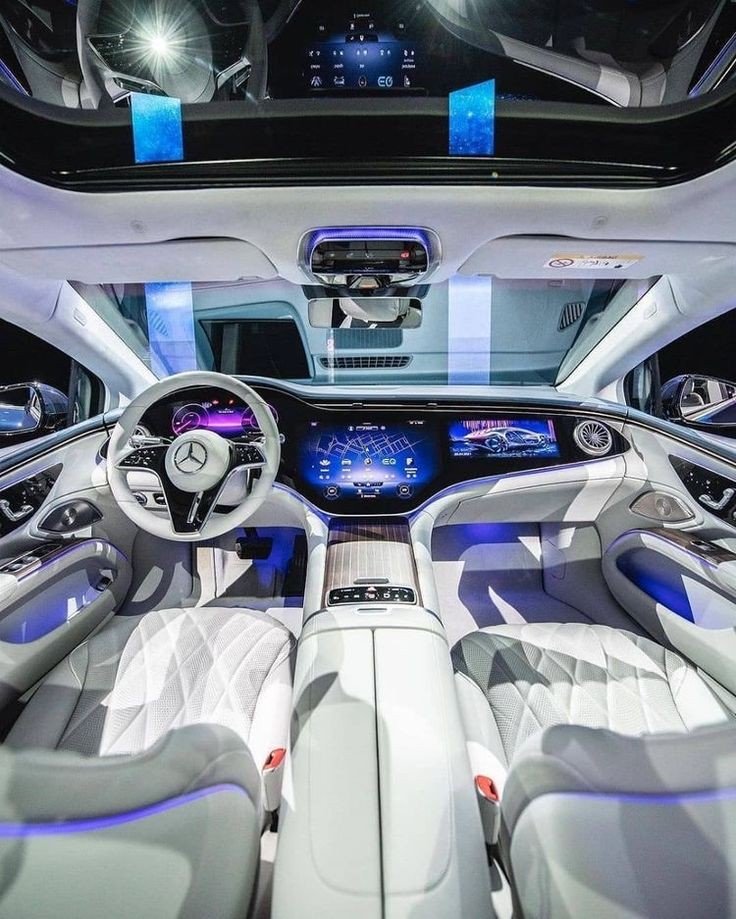
Car-to-Cloud (C2C) connectivity is a technological concept that enables vehicles to communicate with cloud-based services and infrastructure over the internet. This type of connectivity allows cars to exchange data in real-time with various cloud platforms, such as those operated by automakers, third-party service providers, or government entities. The primary purpose of car-to-cloud connectivity is to enhance the functionality, safety, and user experience of vehicles by leveraging cloud-based data storage, processing power, and applications.
Car-to-cloud connectivity is a key enabler for many advanced automotive technologies, including over-the-air (OTA) updates, real-time traffic and navigation services, remote diagnostics, predictive maintenance, and personalized infotainment. As vehicles become increasingly connected and autonomous, C2C connectivity is expected to play a critical role in the evolution of smart transportation.
Key Features of Car-to-Cloud Connectivity
- Over-the-Air (OTA) Software Updates
One of the most important features enabled by car-to-cloud connectivity is the ability to perform over-the-air software updates. OTA updates allow automakers to remotely deliver software upgrades, bug fixes, security patches, and new features directly to the vehicle’s systems without requiring the vehicle to visit a service center. This capability is essential for maintaining the vehicle’s performance, security, and compliance with evolving regulations.
- Real-Time Data Exchange and Telemetry
Car-to-cloud connectivity allows vehicles to continuously send and receive data to and from the cloud in real-time. This data may include information about vehicle performance, location, speed, fuel efficiency, battery status, and driver behavior. The cloud can process this data and send back insights, such as traffic updates, weather alerts, or route optimizations.
- Remote Diagnostics and Predictive Maintenance
With car-to-cloud connectivity, vehicles can transmit diagnostic data to the cloud, where it can be analyzed to detect potential issues or failures. This enables remote diagnostics, allowing service centers or automakers to identify problems before they lead to breakdowns. Additionally, predictive maintenance algorithms can use historical data and real-time information to predict when specific components may need servicing or replacement, improving vehicle reliability and reducing maintenance costs.
- Enhanced Infotainment and Personalized Experiences
Car-to-cloud connectivity provides access to a wide range of cloud-based infotainment services, such as music streaming, news, social media, and apps. It also enables personalized user experiences by storing driver preferences, such as seating positions, climate control settings, and favorite destinations, in the cloud. This data can be accessed across multiple vehicles, allowing for a seamless user experience.
- Real-Time Navigation and Traffic Management
Vehicles connected to the cloud can access real-time traffic information, road conditions, and map updates, enhancing navigation accuracy and efficiency. This connectivity also supports dynamic route optimization, allowing drivers to avoid traffic jams, accidents, or road closures. Car-to-cloud connectivity can further integrate with smart city infrastructure to support intelligent traffic management and reduce congestion.
- Enhanced Safety and Emergency Services
Car-to-cloud connectivity enables vehicles to communicate with emergency services in the event of an accident or breakdown. For instance, if a vehicle’s sensors detect a collision, it can automatically send location data and crash information to emergency responders. Additionally, the cloud can provide real-time alerts about nearby hazards, such as accidents, weather conditions, or road closures, improving overall safety.
- Integration with Smart Home and IoT Devices
Car-to-cloud connectivity allows for integration with smart home devices and the broader Internet of Things (IoT) ecosystem. For example, drivers can remotely control smart home devices, such as thermostats, lights, and security systems, from their car. Similarly, vehicles can be integrated into smart city networks, enabling vehicle-to-everything (V2X) communication and contributing to a more connected urban environment.
How Car-to-Cloud Connectivity Works
- Communication Modules
Cars are equipped with communication modules that include cellular connectivity (e.g., 4G, 5G), Wi-Fi, and Bluetooth capabilities. These modules allow the vehicle to connect to the internet and communicate with cloud servers.
- Data Collection and Processing
Data is collected from various sensors and systems within the vehicle, such as the engine control unit (ECU), telematics control unit (TCU), GPS, cameras, and other sensors. This data is then processed by the vehicle’s onboard computer systems to determine what information needs to be sent to the cloud.
- Data Transmission to the Cloud
The processed data is transmitted to cloud servers using cellular networks (e.g., 4G or 5G) or Wi-Fi. The cloud servers, maintained by automakers, third-party service providers, or government entities, receive and store the data.
- Data Analysis and Storage in the Cloud
The cloud servers analyze the incoming data using advanced algorithms, machine learning models, and data analytics tools. The analysis can provide insights into vehicle health, driver behavior, road conditions, and more. The results of this analysis can be sent back to the vehicle in real-time or stored for future reference.
- Feedback and Actions
Based on the analysis, the cloud can send commands, notifications, or updates back to the vehicle. For example, if the cloud detects a potential safety issue, it can alert the driver immediately. Similarly, the cloud can trigger OTA software updates or send route optimization suggestions based on real-time traffic data.
Benefits of Car-to-Cloud Connectivity
- Improved Vehicle Performance and Safety
Car-to-cloud connectivity ensures that vehicles are always running the latest software, with optimized performance and up-to-date safety features. OTA updates can address critical issues quickly, reducing the risk of recalls and enhancing safety.
- Cost Savings and Efficiency
Remote diagnostics and predictive maintenance enabled by car-to-cloud connectivity can reduce vehicle downtime and maintenance costs. For fleet operators, this can translate into significant savings by optimizing maintenance schedules and reducing unexpected repairs.
- Enhanced User Experience
By providing real-time access to a wide range of services, personalized settings, and infotainment options, car-to-cloud connectivity enhances the overall driving experience. It allows for seamless integration with other digital ecosystems, such as smart homes and IoT devices.
- Data-Driven Insights for Automakers and Service Providers
Car-to-cloud connectivity provides automakers with valuable data on vehicle performance, customer preferences, and driving behavior. This data can be used to improve product development, offer targeted services, and enhance customer satisfaction.
- Support for Autonomous Driving and Smart Mobility
Car-to-cloud connectivity is a critical component of autonomous driving and smart mobility solutions. It enables vehicles to receive and share data with the cloud and other connected vehicles, contributing to the development of intelligent transportation systems and safer autonomous driving.
Challenges of Car-to-Cloud Connectivity
- Data Security and Privacy Concerns
Car-to-cloud connectivity involves the transmission of large amounts of data, including personal and sensitive information. Ensuring data security and protecting user privacy are major concerns that need to be addressed through robust encryption, secure data transmission protocols, and stringent data governance policies.
- Connectivity and Network Reliability
Reliable and fast internet connectivity is essential for car-to-cloud communication. In areas with poor cellular coverage or network congestion, connectivity issues can disrupt data transmission and affect the performance of cloud-based services.
- Standardization and Interoperability
The automotive industry lacks standardized protocols for car-to-cloud communication, which can create compatibility issues between different vehicles, cloud platforms, and service providers. Establishing industry-wide standards is crucial for seamless integration and interoperability.
- Data Management and Processing
The large volume of data generated by connected vehicles can strain cloud infrastructure and require significant data processing capabilities. Efficient data management and processing solutions are needed to handle this data load while minimizing latency and ensuring real-time responsiveness.
Future Outlook for Car-to-Cloud Connectivity
The future of car-to-cloud connectivity looks promising, driven by advancements in 5G networks, cloud computing, and AI. As vehicles become more connected and autonomous, C2C connectivity will play an increasingly vital role in enabling new services, improving vehicle safety, and enhancing the overall driving experience.
Here are some key trends shaping the future of car-to-cloud connectivity:
- 5G Integration
The rollout of 5G networks will provide faster and more reliable connectivity, enabling vehicles to transmit and receive data with lower latency and higher bandwidth. This will support real-time communication for autonomous driving, V2X (Vehicle-to-Everything) applications, and cloud-based services.
- Expansion of Cloud-Based Services
Car-to-cloud connectivity will enable the expansion of a wide range of cloud-based services, including enhanced navigation, real-time traffic management, in-car commerce, remote diagnostics, and subscription-based features.
- Increased Focus on Cybersecurity
As more vehicles become connected, ensuring robust cybersecurity measures will be paramount. Automakers and technology providers will need to invest in advanced encryption, anomaly detection, and security protocols to protect data and maintain user trust.
- Integration with Smart Cities and IoT Ecosystems
Car-to-cloud connectivity will play a crucial role in the development of smart cities and IoT ecosystems, enabling seamless communication between vehicles, infrastructure, and various IoT devices. This will support more efficient traffic management, reduced emissions, and enhanced urban mobility.
Conclusion
Car-to-Cloud (C2C) connectivity is a transformative technology that enhances vehicle functionality, safety, and user experience by enabling real-time communication between cars and cloud-based platforms. While there are challenges to address, such as data security and connectivity reliability, the benefits of C2C connectivity—ranging from OTA updates to enhanced infotainment and predictive maintenance—are substantial. As automotive technology continues to evolve, car-to-cloud connectivity will be a key enabler of the future of smart, connected, and autonomous mobility.






